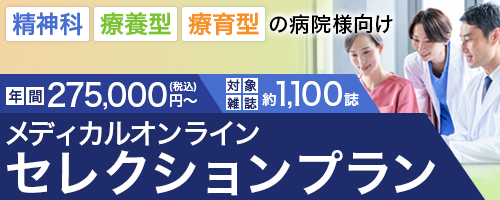アブストラクト
| Title | 上肢麻痺の重症度に合わせた作業療法 |
|---|---|
| Subtitle | 特集 / 脳血管障害の片麻痺患者へのリハビリテーション治療マニュアル |
| Authors | 濱口豊太* |
| Authors (kana) | はまぐちとよひろ |
| Organization | *埼玉県立大学大学院保健医療福祉学研究科, 教授 |
| Journal | MB Medical Rehabilitation |
| Volume | |
| Number | 282 |
| Page | 43-52 |
| Year/Month | 2022 / 12 |
| Article | 報告 |
| Publisher | 全日本病院出版会 |
| Abstract | 「Abstract」脳卒中による運動麻痺は, 重症であるほど回復量が小さく, ADLで機能的に用いることが困難となり, 不使用の手となりやすい. しかし, 急性期から回復期までに積極的に行われている機能回復練習は, 反復経頭蓋磁気刺激(rTMS)に代表されるneuromodulationを促通できる治療法によって維持期までカバーされるに至った. 麻痺の回復量に合わせたADL練習は使用依存的可塑性(UDP)の原理に基づいて行われ, その練習計画に工夫が凝らされている. 分離運動を促す自動・介助運動手技は伝統的に行われてきたが, これに反復練習の運動回数と時間が推計され, 練習計画の参考とされている. 他方, ADLで手を使うレパートリーの変更練習は, 重症度の回復に合わせて手の機能を高める運動療法と併用されるが, その計画は未だ科学的裏付けを得られていない. 現在はrTMSやボツリヌス毒素療法のように中枢と末梢から同時に麻痺の回復を促しつつ, 運動療法と作業療法が後続として回復に貢献しているが, 練習法はさらに患者の重症度に照合して最適化する方略の開発を要する. |
| Practice | 医療技術 |
| Keywords | 片麻痺(hemiparesis), 作業療法(occupational therapy), 上肢運動療法(exercise for paretic upper extremity), 使用依存的可塑性(use-dependent plasticity), 麻痺側上肢機能回復(recovery of upper extremity function) |
- 全文ダウンロード: 従量制、基本料金制の方共に968円(税込) です。
参考文献
- 1) Brunnstrom S : Motor testing procedures in hem-iplegia : based on sequential recovery stages. Phys Ther, 46(4) : 357-375, 1966.
- 2) Hoonhorst MH, et al : How Do Fugl-Meyer Arm Motor Scores Relate to Dexterity According to the Action Research Arm Test at 6 Months Pos-tstroke?. Arch Phys Med Rehabil, 96(10) : 1845-1849, 2015.
- 3) Lyle RC : A performance test for assessment of upper limb function in physical rehabilitation tre-atment and research. Int J Rehabil Res, 4(4) : 483-492, 1981.
- 4) Heller A, et al : Arm function after stroke : mea-surement and recovery over the first three mon-ths. J Neurol Neurosurg Psychiatry, 50(6) : 714-719, 1987.
- 5) Stinear CM, et al : The PREP algorithm predicts potential for upper limb recovery after stroke. Brain, 135(Pt 8) : 2527-2535, 2012.
残りの29件を表示する
- 6) Taub E, et al : Improved motor recovery after stroke and massive cortical reorganization fol-lowing Constraint-Induced Movement therapy. Phys Med Rehabil Clin N Am, 14(1 Suppl) : S77-S91, 2003.
- 7) Kakuda W, et al : Combination Protocol of Low-Frequency rTMS and Intensive Occupational Therapy for Post-stroke Upper Limb Hemipa-resis : a 6-year Experience of More Than 1700 Japanese Patients. Transl Stroke Res, 7(3) : 172-179, 2016.
- 8) Ueda R, et al : Relationship between motor func-tion improvements and white matter structure after low-frequency repetitive transcranial mag-netic stimulation plus intensive occupational the-rapy in chronic subcortical stroke patients. Neu-roreport, 30(7) : 485-490, 2019.
- 9) Wanni Arachchige PR, et al : Structural connec-tivity changes in the motor execution network after stroke rehabilitation. Restor Neurol Neuro-sci, 39(4) : 237-245, 2021.
- 10) Yamada N, et al : Comparison of the effect and treatment sequence between a 2-week parallel repetitive transcranial magnetic stimulation and rehabilitation and a 2-week rehabilitation-only intervention during a 4-week hospitalization for upper limb paralysis after stroke : An open-label, crossover observational study. J Cent Nerv Syst Dis, 14 : 11795735211072731, 2022.
- 11) Ohnishi H, et al : Effectiveness of Repetitive Fac-ilitative Exercise Combined with Electrical Stim-ulation Therapy to Improve Very Severe Paretic Upper Limbs in with Stroke Patients : A Ran-domized Controlled Trial. Occup Ther Int, 2022 : 4847363, 2022.
- 12) Takebayashi T, et al : Impact of the robotic-ass-istance level on upper extremity function in str-oke patients receiving adjunct robotic rehabilita-tion : sub-analysis of a randomized clinical trial. J Neuroeng Rehabil, 19(1) : 25, 2022.
- 13) Legg L, et al : Occupational therapy for patients with problems in personal activities of daily liv-ing after stroke : systematic review of randomi-sed trials. BMJ, 335(7626) : 922, 2007.
- 14) Nam JH, Kim H : How assistive devices affect activities of daily living and cognitive functions of people with brain injury : a meta-analysis. Disabil Rehabil Assist Technol, 13(3) : 305-311, 2018.
- 15) Lotze M, et al : Cerebral plasticity as the basis for upper limb recovery following brain damage. Neurosci Biobehav Rev, 99 : 49-58, 2019.
- 16) Woodbury ML, et al : Longitudinal stability of the Fugl-Meyer Assessment of the upper extre-mity. Arch Phys Med Rehabil, 89(8) : 1563-1569, 2008.
- 17) Hijikata N, et al : Item Difficulty of Fugl-Meyer Assessment for Upper Extremity in Persons With Chronic Stroke With Moderate-to-Severe Upper Limb Impairment. Front Neurol, 11 : 577855, 2020.
- 18) Tauchi Y, et al : Dimensionality and item-diffi-culty hierarchy of the Fugl-Meyer assessment of the upper extremity among Japanese patients who have experienced stroke. Top Stroke Reha-bil, 29(8) : 579-587, 2021.
- 19) Dobkin BH, et al : International randomized clin-ical trial, stroke inpatient rehabilitation with rei-nforcement of walking speed(SIRROWS), impr-oves outcomes. Neurorehabil Neural Repair, 24(3) : 235-242, 2010.
- 20) Stewart JC, et al : Self-efficacy and Reach Per-formance in Individuals With Mild Motor Impa-irment Due to Stroke. Neurorehabil Neural Rep-air, 33(4) : 319-328, 2019.
- 21) Widmer M, et al : Does motivation matter in upper-limb rehabilitation after stroke? Armeo-Senso-Reward : study protocol for a randomized controlled trial. Trials, 18(1) : 580, 2017.
- 22) Ekstrand E, et al : Which clinical and sociodemo-graphic determinants are associated with self-perceived manual ability at one year after stroke? Disabil Rehabil, 42(16) : 2279-2286, 2020.
- 23) Goodwin N, Sunderland A : Intensive, time-ser-ies measurement of upper limb recovery in the subacute phase following stroke. Clin Rehabil, 17(1) : 69-82, 2013.
- 24) Koyama T, et al : A new method for predicting functional recovery of stroke patients with hem-iplegia : logarithmic modelling. Clin Rehabil, 19(7) : 779-789, 2005.
- 25) Prabhakaran S, et al : Inter-individual variability in the capacity for motor recovery after ische-mic stroke. Neurorehabil Neural Repair, 22(1) : 64-71, 2008.
- 26) Stinear CM, et al : Predicting Recovery Potential for Individual Stroke Patients Increases Reha-bilitation Efficiency. Stroke, 48(4) : 1011-1019, 2017.
- 27) Hamaguchi T, et al : Predicting Recovery of Upper Extremity Motor Function After Stroke According to the NovEl Intervention Using Rep-etitive Transcranial Magnetic Stimulation and Occupational Therapy : NEURO. J Stroke Med, 3(1) : 14-20, 2020.
- 28) Hamaguchi T, et al : Prediction of Motor Recov-ery in the Upper Extremity for Repetitive Tran-scranial Magnetic Stimulation and Occupational Therapy Goal Setting in Patients With Chronic Stroke : A Retrospective Analysis of Prospec-tively Collected Data. Front Neurol, 11 : 581186, 2020.
- 29) Cha TH, Hwang HS : Rehabilitation Interven-tions Combined with Noninvasive Brain Stimula-tion on Upper Limb Motor Function in Stroke Patients, Brain Sci, 12(8) : 994, 2022.
- 30) Han CE, et al : Stroke rehabilitation reaches a threshold. PLoS Comput Biol, 4(8) : e1000133, 2008.
- 31) Zondervan DK, et al : The Resonating Arm Exerciser : design and pilot testing of a mechan-ically passive rehabilitation device that mimics robotic active assistance. J Neuroeng Rehabil, 10 : 39, 2013.
- 32) Winstein C, et al : Dosage Matters. Stroke, 50(7) : 1831-1837, 2019.
- 33) Wasaka T, et al : Visuomotor Tracking Task for Enhancing Activity in Motor Areas of Stroke Pat-ients. Brain Sci, 12(8) : 1063, 2022.
- 34) Tanaka T, et al : Estimation of Motor Impairm-ent and Usage of Upper Extremities during Dai-ly Living Activities in Poststroke Hemiparesis Patients by Observation of Time Required to Accomplish Hand Dexterity Tasks. Biomed Res Int, 2019 : 9471921, 2019.



